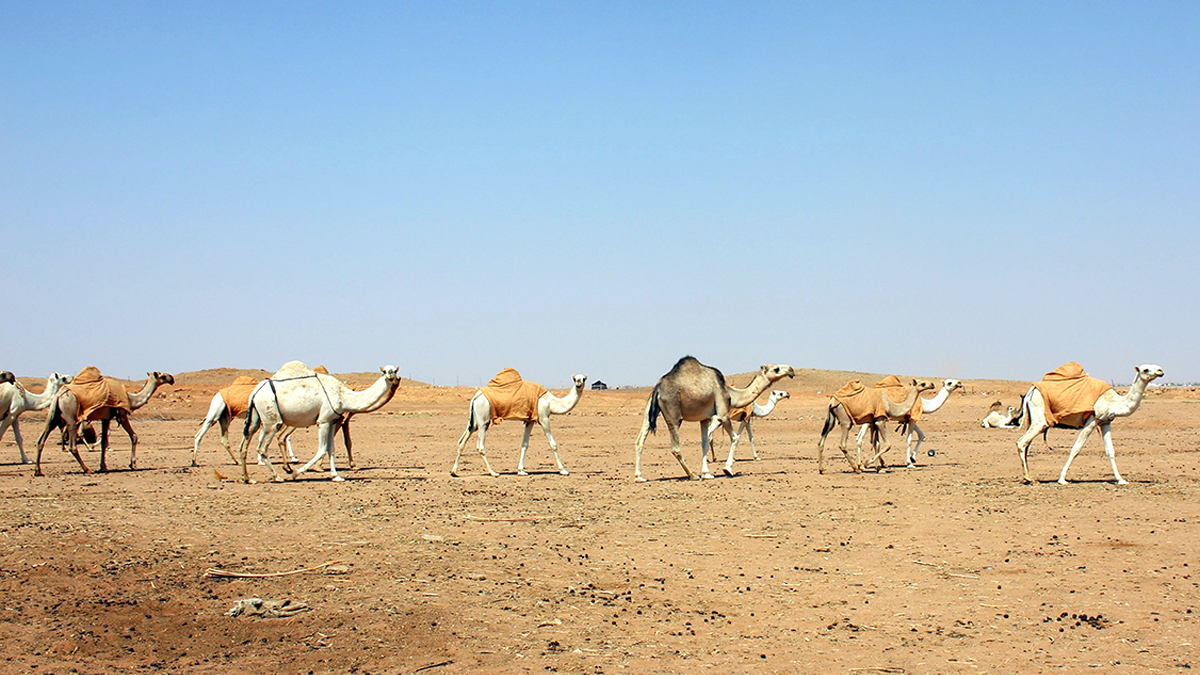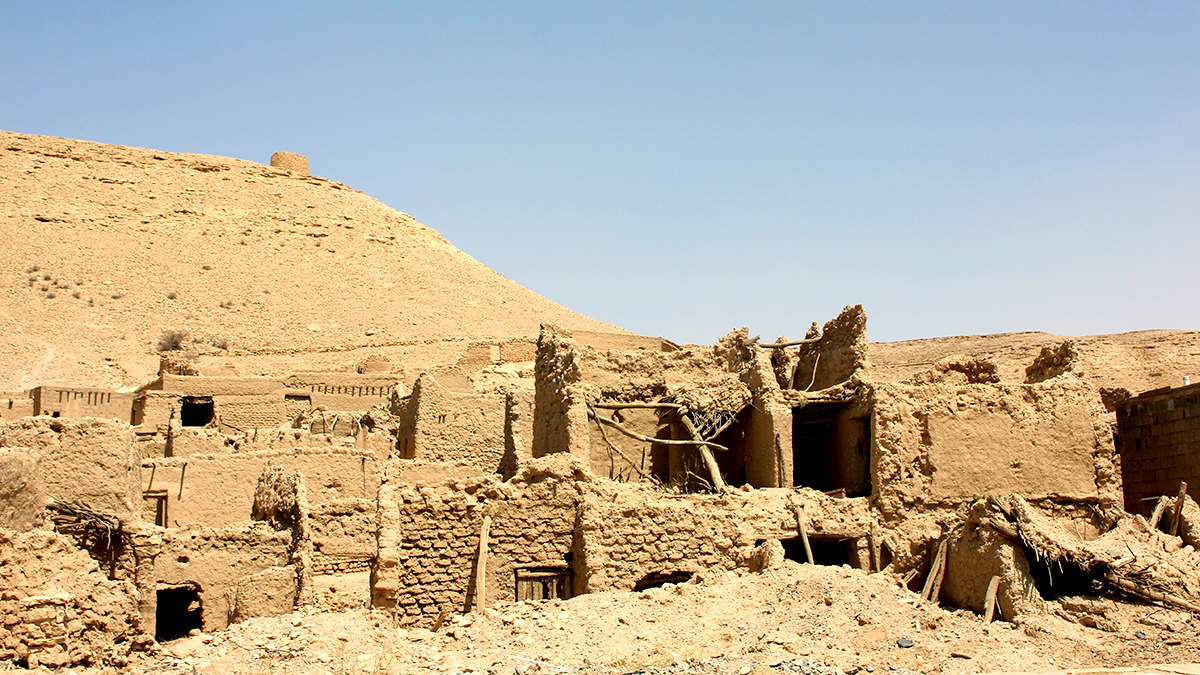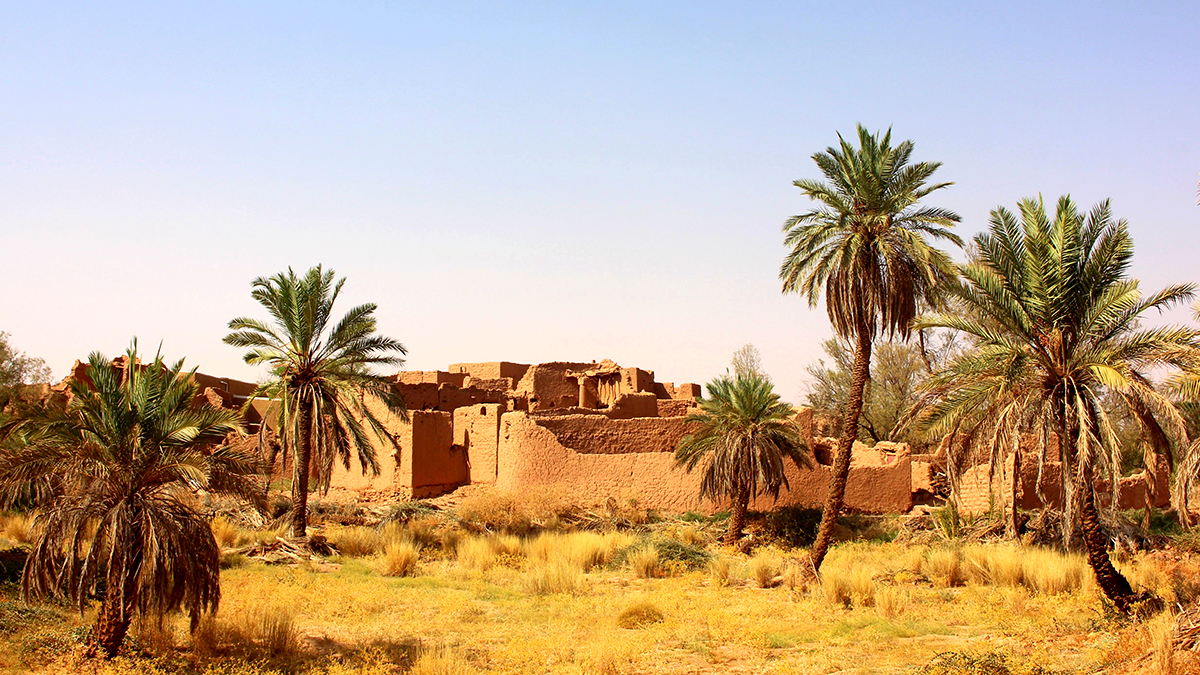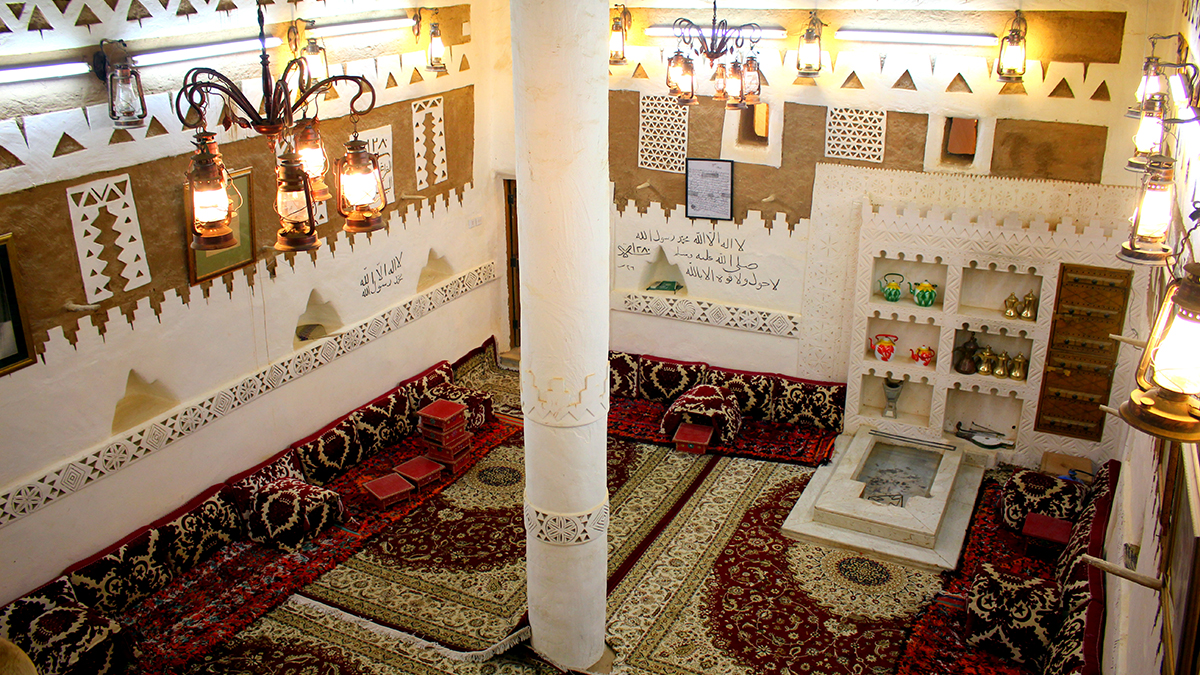Discover Saudi Arbia
Finding history on the roads north of Riyadh

By November 12, 2020
Far from well-known tourist locations, the less-traveled roads north of Riyadh offer a true taste of the Kingdom.
Somewhere north of Riyadh along less-traveled roads, time has stopped. Here, in the traditional villages that have existed for generations, time has not erased traces of the past, but instead restored it through their architecture and ways of life.
Here in the smaller towns and villages extending along valleys and water sources, where palm plantations rise, this architecture is influenced greatly by the hot and dry climate. Closely clustered two-floor dwellings, separated only by narrow, winding roads and their resulting shade, are made of mud bricks, stone, lime plaster, and timber. And in following the old ways, the village’s restoration project used the same materials.
Baked in mud: Al-Ghat
For thousands of years, mud homes have represented the practical wisdom and spirituality of people, particularly those in desert regions, who learned how to use local materials to build homes that fitted the environmental and cultural conditions in which they lived.

Bricks are created using the same process of ancient times, mud is mixed with straw that acts as a glue and sand that prevents the bricks from breaking. Acacia beams create the roof, with palm branches or bamboo shoots tightly tied together to form a mat that is laid on the beams; eventually, a thick layer of mud is placed over to fill the gaps. As a result, good insulation is provided to protect against the blazing desert sun.
First up was the deserted village of Al-Ghat. Located on the northern bank of the Wadi Al-Ghat, the heritage village stretches over 1.5 kilometers (km) and holds all the charms of its unique past, its beauty resting in the gentle slope of the valley on which it was built. Visitors can gaze at its elegant architecture and a main street that unfolds along the wadi bed.
The Emara Palace, now a museum in the town’s center, was once owned by the late Prince Nasser bin Saad Al-Sudairy. Today, it highlights social life and history throughout time, exhibiting Paleolithic tools and petroglyphs found in the area, traditional agriculture tools, clothing and crafts, the “jussah” room set aside for the preservation of dates, as well as exhibits on traditional hunting methods.
About half an hour away, there is a mansion in the desert of Majma’ah that features a renovated courtyard with vivid colored carpets and a fireplace to prepare coffee and other hot beverages. The welcome is warm, with free-flowing coffee and dates, and an invitation to visit a nearby camel farm.

Ushaiger’s lasting legacy
Ushaiger, perhaps the best-known heritage village, is 200 km northwest of Riyadh in the heart of the Najd. On the Al-Washim plain — just west of a narrow range of red sand dunes — Ushaiger takes its name from the color of a small hill situated at the north of the village.
The first inhabitants settled here around 1,500 years ago, and the village served as a common stopping point for pilgrims going for Hajj. Ushaiger heritage village features narrow streets and seemingly endless alleyways that meander between the 400 mud houses and 25 mosques the village hosts. Some of the houses that still carry the name of the family that lived in them were renovated and are open to visitors.
It is also renowned for historical figures such as Muhammad ibn Abdul-Wahab, Islamic scholar Sheikh Al-Othaimeen, and a number of poets. Today, the village belongs to the Tammim tribe, with the governor’s house open for visits.
Many of the regions’ traditions and history are kept alive at Al Salem Museum, which hosts a range of traditional collectibles such as coins, jewelry, silverware, agricultural tools, wooden doors, scales, utensils, and school materials.
Shaqraa, the last stop
Shaqraa, the last heritage village on this route, is one of the oldest in the Najd area. One of the few towns on the route from Riyadh to Makkah, it once hosted a huge marketplace. The current souq still has about 45 shops, two masjles, and about 80 houses.
The entire town is surrounded by high towers, and its restorations has made Shaqraa come alive. You can still visit the interiors, or enjoy the patio, or the roof terraces that provide a bird’s-eye view of the whole city, replete with mud dwellings and white battlements. Or you can walk the streets until you reach the souq, its shops maintaining their original appearance and even an emporium museum with the ancient original products.




